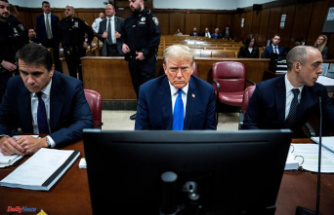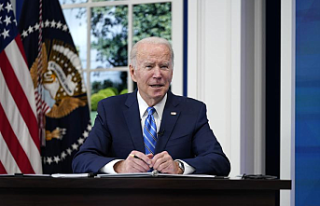This increased scrutiny led to a review by the Pennsylvania Historical and Museum Commission of all 2,500 markers. The review focused on historical context and factual errors as well as racist and other inappropriate references.
The state has so far removed two markers, changed two, and issued new text for two more.
In some parts of the country, historical markers have become an additional front in the national reckoning about slavery, segregation, and racial abuse. They have also taken downCivil war statues and changed or reconsidered names of institutions, roads, and geographic features.
Montgomery's Equal Justice Initiative, which has placed dozens of markers in the South to commemorate racial terror and lynchings, believes that the idea of "who is honored", "what is remembered," and "what is memorialized tells an story about a society, that can't possibly be reflected in any other way."
Diane Turner, curator at Temple University's Charles L. Blockson Afro-American collection in Philadelphia, one the largest repositories of Black history literature, and related material, stated that historical markers can educate the public and help combat systemic racism.
"By being able tell everyone's story it's beneficial for society as a whole. Turner stated that it's not for anyone to take away from anyone else. Let's share these stories because more truth is better.
Kimberly Wright Cassidy (Bryn Mawr College president) requested that a marker at the campus' edge be removed by the Pennsylvania history agency. It noted that President Woodrow Wilson had once taught there. Cassidy wrote to the commission, citing Wilson's dismissive remarks about women's intellectual abilities and his racist policy regarding federal workforce segregation.
The commission ordered the removal of a marker at Philadelphia's birthplace of Continental Army Major General "Mad" Anthony Wayne, which referred to him in an Indian fighter, and is currently developing a replacement. This marker was removed from the grounds in Pittsburgh by the National Aviary. It used to be located on the site of a 19th century prison where Confederate cavalry were kept after being captured in Ohio during the Civil War.
The marker, which was located in Pittsburgh's Point State Park, marked the spot where British Gen. John Forbes won a 1758 military victory. It claimed that Anglo-Saxon supremacy had been established in the United States.
The commission also updated markers in Fulton County, Pennsylvania that were related to movement of Confederate Army troops in 1863 after the Battle of Gettysburg. It also related to an 1864 Confederate cavalry raid against Chambersburg that left much of the town in a smoldering ruin.
One marker previously mentioned the Confederates who had left Pennsylvania. The state added language to describe their defeat by Union soldiers. The second marker, which was about two Confederates who were killed in a skirmish ended up with details about the raid by Union soldiers from New York and 32 prisoners.
These changes have prompted some political resistance, including from a Republican State Representative, an appointee to the Historical and Museum Commission. He wrote in October about his concerns with the initiative.
"My fear is the commission is becoming less of an authentic historical arbiter, and more of a miniature version of George Orwell’s Ministry of Truth which has government officers altering history to fit their convenient narrative," wrote state Rep. Parke Wentling.
A contractor reported to the commission that a Fulton County commissioner had harassed his team last year when they removed the old markers.
This month, Steve Miskin (a senior Republican state House press aide) responded to a news report about Fulton County markers by tweeting, "Is Pennsylvania planning on removing 'The Confederacy’ from textbooks?" "Censor television shows and movies that mention 'The Confederacy'?
Recent years have seen disputes over the wording of historical markers -- or their existence -- divide communities across other states, including Memphis, Tennessee, Sherman, Texas, and Colfax in Louisiana.
The commission in Pennsylvania examined every marker it controlled and focused on the portrayal of Native American and African American stories. It also adopted a new policy regarding how markers were established. It identified 131 markers that could need to be changed, and a subset of 18, which required immediate attention.
Jacqueline Wiggins (retired educator, Marker Review Panel member of the state historical commission) stated that "the language could be sexist or racist." "There is still much to do."
The stories of previously marginalized groups and people are being told by new markers that are now approved.
If the markers' subjects are women, Hispanics, Latinos, and Asian Americans or about Black and LGBTQ history, the commission will provide financial support. Underrepresented areas are also eligible for financial support. The agency subsidized markers for petroglyphs at Clarion County last year. This is the camp where Muhammed Ali trained in Schuylkill County. It also was the location of a boycott that prevented a school segregation attempt in Chester County.
The March marker approved by the State includes the first significant workforce of Chinese immigrants at a cutlery plant, the cofounder one of the country’s first Black fraternities and three Ephrata women, who are among the nation’s first female composers.
Native American-related markers usually frame Native Americans in terms of Europeans who displaced them. A Juniana County marker is about "a stockade constructed about 1755 to protect settlers against Indian marauder."
Ira Beckerman, a historian who has recently published a study on Pennsylvania markers related to Black and Native American history, said that there is much tap-dancing about who started which battle or skirmish. "If it was started by settlers, it was a battle that is worthy. It was a massacre, savagery, etc. if the Native Americans responded in their own way.
Beckerman concluded that the 348 Native American historical markers in the state "tell a compelling and accurate story of racism, white nationalism"












